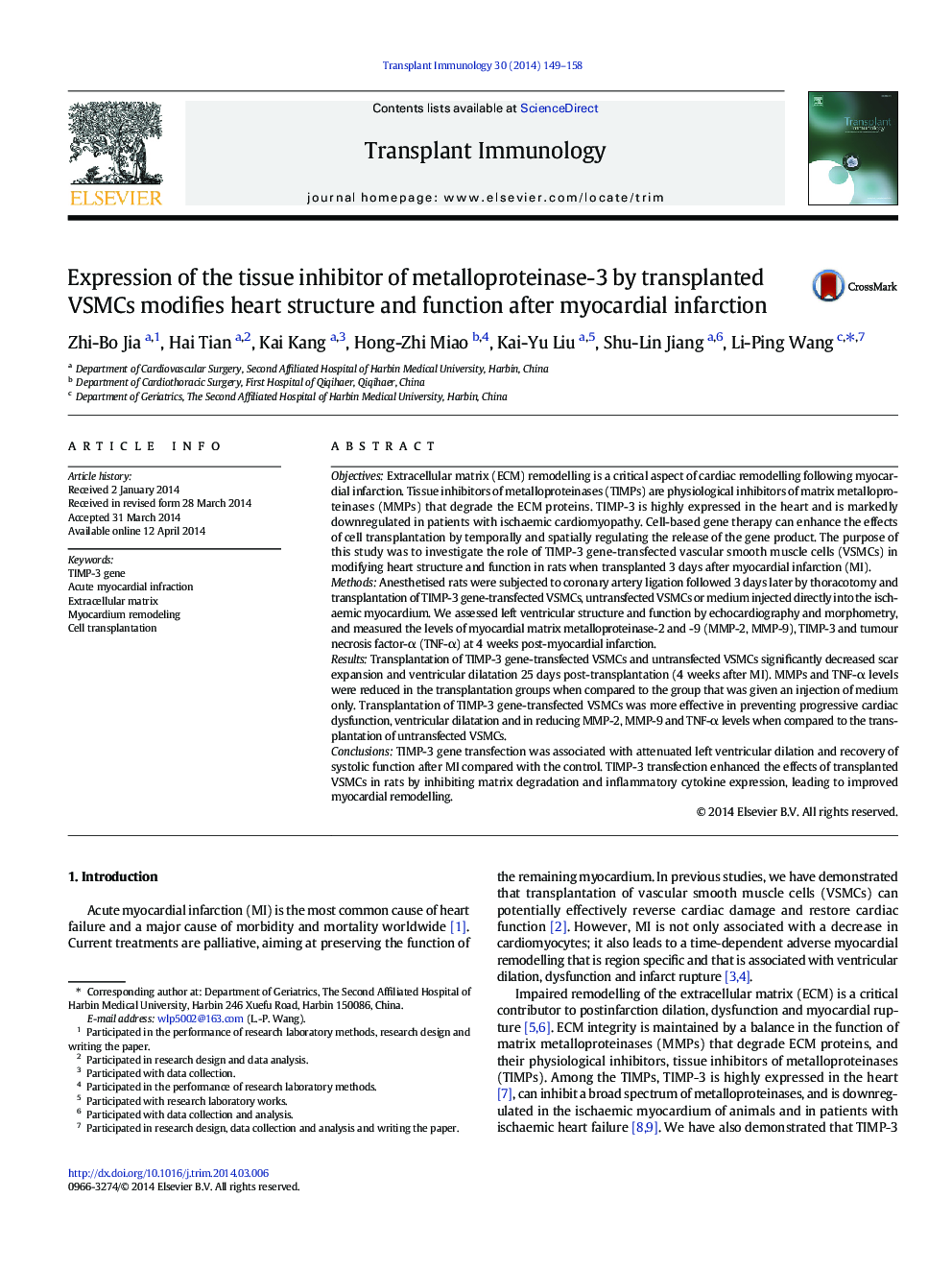| Article ID | Journal | Published Year | Pages | File Type |
|---|---|---|---|---|
| 3392074 | Transplant Immunology | 2014 | 10 Pages |
•We transferred TIMP-3 gene to rat heart after myocardial infarction.•We make the gene transfer to the vascular smooth muscle cells.•TIMP-3 gene improved heart structure and function.•TIMP-3 transfection enhanced the effects of VSMCs transplantation.•TIMP-3 work by inhibiting matrix degradation and inflammatory factor expression.
ObjectivesExtracellular matrix (ECM) remodelling is a critical aspect of cardiac remodelling following myocardial infarction. Tissue inhibitors of metalloproteinases (TIMPs) are physiological inhibitors of matrix metalloproteinases (MMPs) that degrade the ECM proteins. TIMP-3 is highly expressed in the heart and is markedly downregulated in patients with ischaemic cardiomyopathy. Cell-based gene therapy can enhance the effects of cell transplantation by temporally and spatially regulating the release of the gene product. The purpose of this study was to investigate the role of TIMP-3 gene-transfected vascular smooth muscle cells (VSMCs) in modifying heart structure and function in rats when transplanted 3 days after myocardial infarction (MI).MethodsAnesthetised rats were subjected to coronary artery ligation followed 3 days later by thoracotomy and transplantation of TIMP-3 gene-transfected VSMCs, untransfected VSMCs or medium injected directly into the ischaemic myocardium. We assessed left ventricular structure and function by echocardiography and morphometry, and measured the levels of myocardial matrix metalloproteinase-2 and -9 (MMP-2, MMP-9), TIMP-3 and tumour necrosis factor-α (TNF-α) at 4 weeks post-myocardial infarction.ResultsTransplantation of TIMP-3 gene-transfected VSMCs and untransfected VSMCs significantly decreased scar expansion and ventricular dilatation 25 days post-transplantation (4 weeks after MI). MMPs and TNF-α levels were reduced in the transplantation groups when compared to the group that was given an injection of medium only. Transplantation of TIMP-3 gene-transfected VSMCs was more effective in preventing progressive cardiac dysfunction, ventricular dilatation and in reducing MMP-2, MMP-9 and TNF-α levels when compared to the transplantation of untransfected VSMCs.ConclusionsTIMP-3 gene transfection was associated with attenuated left ventricular dilation and recovery of systolic function after MI compared with the control. TIMP-3 transfection enhanced the effects of transplanted VSMCs in rats by inhibiting matrix degradation and inflammatory cytokine expression, leading to improved myocardial remodelling.
